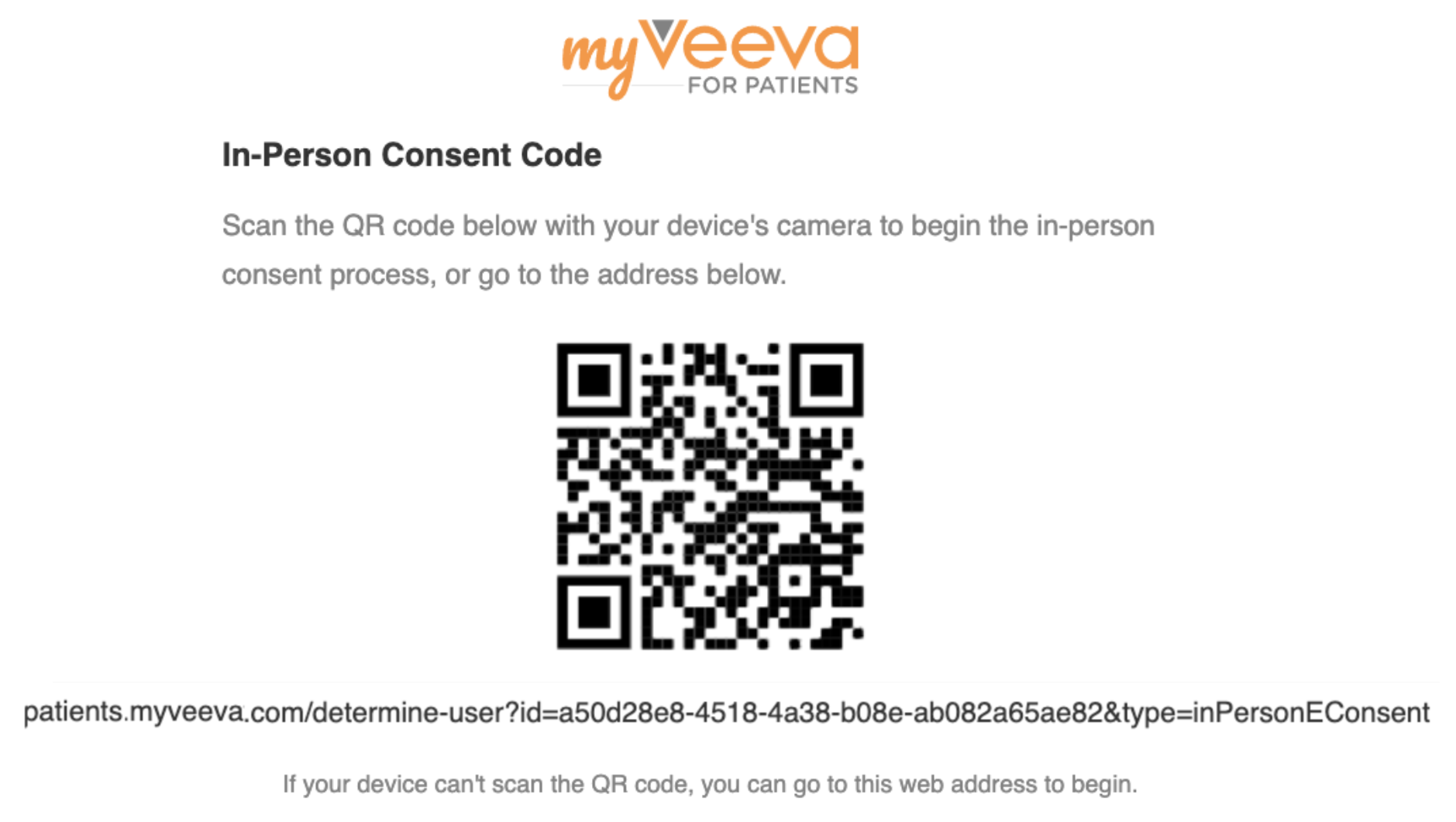Note Veeva eConsent may be provided by your sponsor for use on a Connected Study or enabled for your SiteVault account as a paid add-on to use across all studies. Contact the Site Success Team to learn more.
Prerequisites
The following prerequisites must be met before you can send an eConsent form to a participant:
| Prerequisite | Description | ||||||||||||
|---|---|---|---|---|---|---|---|---|---|---|---|---|---|
| Documents |
Blank ICFs must meet the following prerequisites in order to be sent:
Additionally, you can’t send a blank ICF that has already been sent and is still with the participant. These in-progress ICFs are displayed in the eConsent Form dialog (denoted with an orange In Workflow icon), but you cannot select them. |
||||||||||||
| Participants and Signatories |
The following prerequisites must be met in order to send a blank ICF as an eConsent to a participant or signatory:
See the Managing Participants in Study Connect page for information on creating or updating participant and signatory records. Note MyVeeva for Patients users can update their email address and phone number in the MyVeeva for Patients Android, iOS, or web applications after they register their account. The information is automatically updated in SiteVault and your Site Administrator users are notified of the change. |
Sending eConsent Forms to Participants to Sign in MyVeeva for Patients
When your blank ICF or ICFs for the study are in the Approved for Use state and the participant and any applicable signatory records exist, you can send ICFs for signature in Study Connect. You don’t need to know whether the participant or signatory already has a MyVeeva for Patients account in order to send them an eConsent form.
- If they don’t already have an account for the email address entered in Study Connect, they’ll be prompted to register when they access MyVeeva for Patients from the invitation email or in-person consent code.
- If they already have an account for the email address entered in Study Connect, they can log in and access the documents for your study.
If the prerequisites above are met, complete the following steps to send an ICF to a participant and their signatories to review and complete:
- In Study Connect, select eConsent on the left menu.
- On the Participants tab, locate the participant beneath the Patient Name column and select the Send eConsent icon (
 ).
). - In the Send Consent Document pop-up, select the ICF or ICFs you want to send to the participant and select Next.
- If necessary, select any applicable signatories on the Signatories page.
- Select Send. If the participant has not signed a version of the blank ICF before, a placeholder document is added to the list of documents for the participant. If the patient has signed a previous version and this is a reconsent, a new minor version is added to the signed ICF.
See the Troubleshooting Veeva eConsent and MyVeeva for Patients page for more information about issues that participants may encounter.
Sending eConsent Forms to Participants to Sign In Person

You can create and scan an in-person QR consent code to have participants or other signatories complete eConsent forms in person using a site’s device or another device (example: participant’s phone). A participant or signatory can scan the QR code or go to the web address shown onscreen to access MyVeeva for Patients. This in-person consenting functionality bypasses the invitation email and makes it easier to have participants and signatories complete eConsent forms at the office or another location where they may not have their own device. Patients who consent in person must electronically sign during an in-person consenting session and hand-draw their signature in place of dual-factor authentication.
Complete the following steps to have participants or signatories complete eConsent forms in person:
- In Study Connect, select eConsent on the left menu.
- Ensure that the participant has been issued an eConsent to sign.
- Select one of the following options from the Participants tab:
- Select the View In-Person Code icon (
 ) associated with the participant
) associated with the participant - Select the participant beneath the Patient Name column, then select the Start Consent In Person button on the right side of the Consent Forms section.
- Select the View In-Person Code icon (
- Select one of the following device options:
- Use This Device: The participant consents on the site device. To select, click Start and follow the instructions.
- Use Another Device: The participant consents on a different device. To select, scan the QR code with the different device and follow the instructions.
- The participant confirms their identity.
- The participant completes the consent process.
- The participant selects End Session.
- If using the site device, the participant returns the device to a site user.
Consenting Participants In Wet Ink
If you need to consent a participant in wet ink, you or your sponsor can add a site signature block to your study’s eConsent form template. You can print the blank form and have all signatories sign the form in wet ink: the participant and signatories sign their applicable signature blocks, and you sign the site signature block. You can then upload a scanned copy of the form to SiteVault as an Informed Consent Form (signed) document type.
For more information about adding a site signature block to an eConsent form, see the following help topics:
- Editing an eConsent Form
- Content Block Settings in Clinical Operations Help
 Study Connect
Study Connect